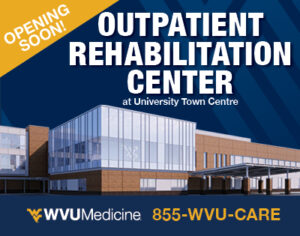by Jeremy Mohler
As one of the most memorable school years in history winds down, state and local school leaders are considering how to make the most of the $190 billion federal dollars in COVID-19 relief flowing to our nation’s public schools.
The wise course of action would be to fund initiatives that address both the short-term impacts of the pandemic, while laying the groundwork for long-term student success. Fortunately, some states have already taken this approach with money from the first round of federal relief aid, distributed through the Coronavirus Aid, Relief and Economic Security Act (CARES) Act.
In California, state leaders used $45 million in CARES funding to start a competitive grant program for expanding and sustaining school programs that provide student health, mental health and other support services, as well as training to local personnel. In Ohio, Cincinnati’s school district used CARES money to offer students summer learning programs that address both short-term learning loss due to the pandemic and provide learning opportunities that could be sustained when schools resume in the fall.
In each of these cases, state leaders were guided by what’s known as the “community school” strategy.
Community schools are public schools that bring together community partners to offer a range of support and opportunities to students, families, and nearby residents. They are designed to support the entirety of a student’s well-being to ensure they are healthy, well-fed, safe and in a better position to learn. These benefits then extend to the surrounding community.
Schools following a community schools strategy have been some of the real success stories both before and during the pandemic.
When COVID-19 hit, Los Angeles’s 93rd Street Steam Academy sprang into action, providing monthly groceries to 80 of its families. By September, the school, located in one of the city’s poorest neighborhoods, was distributing food to 300 families twice a month. It gave away clothing and household essentials to families and the broader community, including people experiencing homelessness.
Another school guided by the community schools strategy is Gibsonton Elementary, located in a high-poverty, semi-rural area outside of Tampa, Florida. Just prior to the pandemic, the school used the community schools strategy to help improve standardized test scores.
At the start of the pandemic, the school expanded its on-campus food offerings, gave away backpacks full of school supplies, and installed a campus washer-dryer. It also organized an effort to have the county install new streetlights around campus to increase student safety.
Research shows that community schools that adhere to best practices not only improve student educational outcomes, but they also reduce racial and economic achievement gaps.
A study released in 2020 found that 113 of New York City’s public schools using the community school strategy experienced improvements in attendance, graduation rates, math scores, and the rate at which students advance grade levels. The results motivated New York City Mayor Bill de Blasio to include $10 million in his proposed 2022 budget to expand the number of community schools from 267 to 406.
With unprecedented federal funding headed their way, state and local school leaders should take a hard look at the community school strategy, especially given the widespread trauma and instability experienced by students over the past year. The pandemic, while an extraordinary tragedy, has gifted us the chance to reimagine public education and aim our efforts towards what is working for students elsewhere.
Jeremy Mohler is communications director at In the Public Interest. His writing has appeared in the Washington Post, USA Today, the Guardian, Jacobin, The American Prospect, El Nuevo Día, and other outlets.



